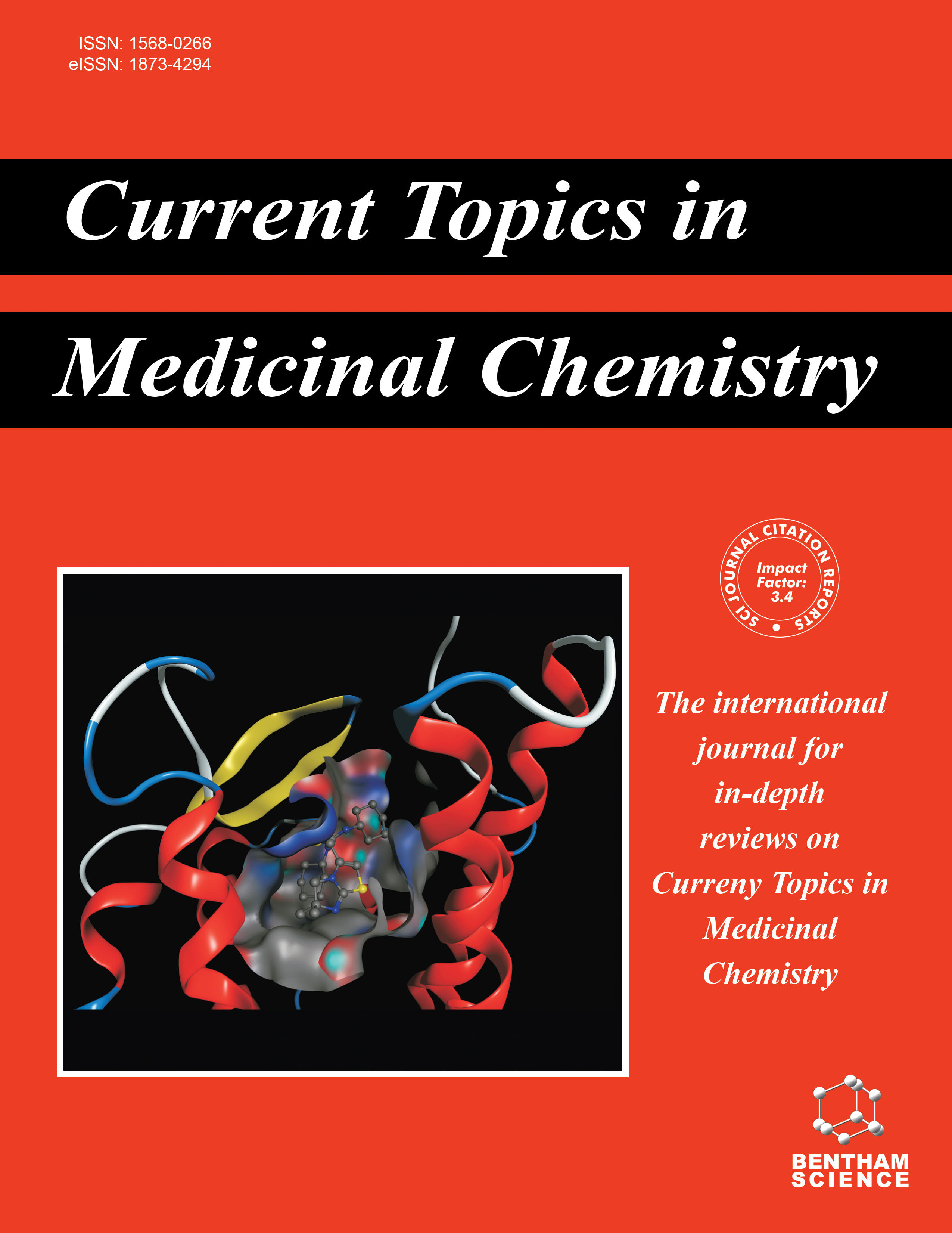- Home
- A-Z Publications
- Current Topics in Medicinal Chemistry
- Previous Issues
- Volume 16, Issue 10, 2016
Current Topics in Medicinal Chemistry - Volume 16, Issue 10, 2016
Volume 16, Issue 10, 2016
-
-
Development of Small-molecule HIV Entry Inhibitors Specifically Targeting gp120 or gp41
More LessAuthors: Lu Lu, Fei Yu, Lifeng Cai, Asim K. Debnath and Shibo JiangHuman immunodeficiency virus type 1 (HIV-1) envelope (Env) glycoprotein surface subunit gp120 and transmembrane subunit gp41 play important roles in HIV-1 entry, thus serving as key targets for the development of HIV-1 entry inhibitors. T20 peptide (enfuvirtide) is the first U.S. FDA-approved HIV entry inhibitor; however, its clinical application is limited by the lack of oral availability. Here, we have described the struct Read More
-
-
-
Molecular Gymnastics: Mechanisms of HIV-1 Resistance to CCR5 Antagonists and Impact on Virus Phenotypes
More LessHuman immunodeficiency virus type 1 (HIV-1) enters host cells through the binding of its envelope glycoproteins (Env) to the host cell receptor CD4 and then subsequent binding to a chemokine coreceptor, either CCR5 or CXCR4. CCR5 antagonists are a relatively recent class addition to the armamentarium of anti-HIV-1 drugs. These compounds act by binding to a hydrophobic pocket formed by the transmembrane helices of Read More
-
-
-
Contemporary HIV Vaccines: Tissue Resident T-Cells and Strategies to Prevent Mucosal Infection
More LessAuthors: Hyon-Xhi Tan, Stephen J. Kent and Robert De RoseHIV is primarily transmitted to women via the cervicovaginal mucosa, with the infection remaining localized for several days prior to systemic dissemination and irreversible damage to the immune system. The early phase during which HIV infection is localized and exhibits little or no viral diversity presents a vantage point for HIV vaccines that stimulate T-cell mediated clearance. CD8+ resident memory T-cells (TRM) are p Read More
-
-
-
Current Concepts for the IND-Directed Development of Microbicide Products to Prevent the Sexual Transmission of HIV
More LessIn the absence of an approved and effective vaccine, topical microbicides have become the strategy of choice to provide women with the ability to prevent the sexual transmission of HIV. Topical microbicides are chemical and physical agents specifically developed and formulated for use in either the vaginal or rectal environment to prevent the sexual transmission of infectious organisms. Although a microbicide product will Read More
-
-
-
Fragment Based Strategies for Discovery of Novel HIV-1 Reverse Transcriptase and Integrase Inhibitors
More LessAuthors: CatherineLatham, Jennifer La, Ricky N. Tinetti, David K. Chalmers and Gilda TachedjianHuman immunodeficiency virus (HIV) remains a global health problem. While combined antiretroviral therapy has been successful in controlling the virus in patients, HIV can develop resistance to drugs used for treatment, rendering available drugs less effective and limiting treatment options. Initiatives to find novel drugs for HIV treatment are ongoing, although traditional drug design approaches often focus on known binding Read More
-
-
-
HIV-1 Gag as an Antiviral Target: Development of Assembly and Maturation Inhibitors
More LessHIV-1 Gag is the master orchestrator of particle assembly. The central role of Gag at multiple stages of the HIV lifecycle has led to efforts to develop drugs that directly target Gag and prevent the formation and release of infectious particles. Until recently, however, only the catalytic site protease inhibitors have been available to inhibit late stages of HIV replication. This review summarizes the current state of developmen Read More
-
-
-
Targeting Virus-host Interactions of HIV Replication
More LessAuthors: Caroline Weydert, Jan De Rijck, Frauke Christ and Zeger DebyserCellular proteins that are hijacked by HIV in order to complete its replication cycle, form attractive new targets for antiretroviral therapy. In particular, the protein-protein interactions between these cellular proteins (cofactors) and viral proteins are of great interest to develop new therapies. Research efforts have led to the validation of different cofactors and some successes in therapeutic applications. Maraviroc, t Read More
-
-
-
Therapeutic Approaches to Eradicate Latent HIV-1 in Resting CD4+ T Cells
More LessWhile combination antiretroviral therapy (cART) can drive HIV-1 RNA levels to < 50 copies/mL in patient plasma, most infected individuals continue to harbor low-level persistent viremia. Latently infected resting CD4+ T cells are thought to constitute the major reservoir of HIV-1 persistence. In this reservoir, the integrated provirus remains transcriptionally silent as long as the host cell is in a resting state. On discontinuation of c Read More
-
Volumes & issues
-
Volume 25 (2025)
-
Volume 24 (2024)
-
Volume 23 (2023)
-
Volume 22 (2022)
-
Volume 21 (2021)
-
Volume 20 (2020)
-
Volume 19 (2019)
-
Volume 18 (2018)
-
Volume 17 (2017)
-
Volume 16 (2016)
-
Volume 15 (2015)
-
Volume 14 (2014)
-
Volume 13 (2013)
-
Volume 12 (2012)
-
Volume 11 (2011)
-
Volume 10 (2010)
-
Volume 9 (2009)
-
Volume 8 (2008)
-
Volume 7 (2007)
-
Volume 6 (2006)
-
Volume 5 (2005)
-
Volume 4 (2004)
-
Volume 3 (2003)
-
Volume 2 (2002)
-
Volume 1 (2001)
Most Read This Month
Article
content/journals/ctmc
Journal
10
5
false
en


